On a chilly January afternoon, friends and family, both in shoes and on roller skates, rolled into the Boulder County Fairgrounds Indoor Arena spinning with suspense. They weren’t there to disco; they were there to compete.
The Boulder County Roller Derby (BCRD) is a bright and boisterous volunteer-run non-profit organization that brings together fierce competition, a tight-knit community, and a love for the sport.
Drinks and snacks, including fundraising baked goods, were grabbed, and folks settled into their seats. Gather ‘round, gather ‘round—the show is about to start.
The show is an athletic spectacle—a brutal ballet of black swans swimming and gliding across the stage with grace beneath a fierce exterior. It’s not The Nutcracker Suite, but it is super sweet—sick, even—and other types of cracking are happening: bones, shin pads, knuckles, and lips.
At times, skaters are hard-pressed to tiptoe lithely past their opponents in an effort to evade capture or regain speed. Out on the cold cement, they resemble a bunch of knucklehead football players in tights, crashing into each other while telling a full-blooded tale about tough love, tenacity, and friendship.
Plain and simple: it just looks as fun as H-E-double-hockey sticks.
From a picnic table, Lady J and Scarebear—roller derby skaters and co-heads of bout production—watched over the juniors like older sisters watching their younger siblings take to the track.
“We do have a pretty extensive training program that skaters go through whenever they start. We would never take somebody right off of the street and throw them into a game like this,” Scarebear said. “It’s 16 weeks long, and they learn how to do the basics of skating, and then how to fall safely, how to get back up safely, how to give and take a hit. Safety is definitely a really big concern. Then also, there are a lot of rules in place as you get into the gameplay that are meant to make sure that people are safe.”
Contrary to popular cultural representations in movies like Whip It, roller derby has strict regulations to prevent dangerous play.
“No elbows, no punching, no kicking,” Scarebear said. “There are certain areas of the body you can hit and areas you can’t.”
Despite these precautions, injuries still happen.
“At this point, I fractured my ankle, and I fractured two fingers last year and tore something in my wrist—even with all the safety,” Lady J admitted.
Roller derby isn’t just about cracking skulls, it’s about belonging.
“When I found Boulder County Roller Derby, it felt like I had found home,” Lady J said. “Life was good, but it got so much better after finding this community. We’re a family, and I’ve made some of the best friends I’ve ever had as an adult.”
Scarebear echoed this sentiment: “Community is a big part of what we do. It’s about empowering people of all body types, financial status, and social location, in a sport that’s physically and emotionally demanding. But you’re surrounded by so many people that want to see you succeed.”
The BCRD has been around since 2011, and some of its members have stayed around for the long haul.
“When I joined in 2012, penalties were still a minute long,” said Fleur de Beast, head of recruitment. “We took a hit in membership during the pandemic, but we’ve been rebuilding since then. With new members coming in, the atmosphere and culture shift slightly over time, but the core spirit remains.”
Fleur de Beast, who started at age 36 and is now 48, spoke about the challenges of staying active in such a physically demanding sport.
“I have to do more prep now—stretching before and after, and extra exercises at home to stay in shape,” Fleur de Beast said. “But I feel like roller derby keeps me young. Motion is lotion, and it keeps my joints flexible and my body strong. If anything, I’m in better shape now than I would have been without derby.”
Much like lacing up skates, putting on a roller derby event is no small feat—on one’s feet.
“We had to submit our dates last September and wait for approvals,” said Lady J. “We also have to secure liquor permits, special event permits, and insurance.”
Scarebear added, “We coordinate with volunteers, merch, tickets, concession stands, and officials. Each hour, we have around 10 to 20 volunteers working, not counting the officials.”
Their events draw anywhere from 150 to 400 attendees, but they are constantly working to grow their audience.
“It’s an athletic sport. It’s not theatrical. These are athletes out there. This is a very hard sport, and it’s real. None of it’s staged, none of it is written up before, this is all live,” Lady J said.
One of the group’s most pressing concerns is finding a new practice space.
“We have practices every day of the week at our practice space in Lafayette. We’re currently in search of a new practice space because ours is going to be bulldozed at some point,” Lady J revealed. “That’s one of the reasons we run these events—not just to skate, but also to raise money, keep a roof over our heads, and continue doing what we love.”
Finding a new space has been as tricky as chasing down a pesky jammer floating around the outside.
“Everything is expensive, and people don’t seem to want to rent to a nonprofit, which is really difficult,” said Lady J, a jammer. “We’re looking at warehouses and other spaces, but it’s tough.”
Others opened up on these thoughts like a physically imposing power blocker.
“Finding an affordable space that suits our needs is tough. We’ve moved multiple times, and it’s a universal challenge for roller derby leagues everywhere,” Fleur de Beast said.
“We lucked out once when one of our members was a farmer in Niwot who had a barn that used to be an indoor riding barn, and she rented it out to us. We were there for several years. It was big enough to have a full regulation-size track and maybe about three to five feet of ref lane all the way around,” Fleur de Beast described. “We built a subfloor in there. And then, one year, 2018… There was an electric fire in the kitchen, and it burned.”
Lady MacDeath, head of sponsorship and practice facility search, elaborated on the challenge.
“Yeah, the struggle is real for sure. Especially post-pandemic, it’s just hard to find a big enough space to house the track because we need about 100 feet by 80 feet,” Lady MacDeath explained. “We’re hoping to find a bigger facility that can host not only the track, but also stands for our fans, vendors, and music to create a stable community space.”
Lady MacDeath added, “We’ve been looking mainly at warehouses because the track can’t have any holes in the middle. The Boulder County Fairgrounds have been great, but we need a more permanent solution. We’ve practiced everywhere—from barns in Niwot to various rental spaces. A permanent home would provide stability for both our league and our junior league.”
To aid in their search, BCRD has enlisted the help of a realtor.
“One of our junior skaters’ dads is a realtor, and he’s been helping us out. We’re also working with a commercial real estate agent. Any leads people have, we’re chasing them,” Lady MacDeath said.
BCRD sustains itself through a combination of ticket sales, bar revenue, player dues, merch sales, and sponsorships.
“Fundraising is critical to keep us going,” Scarebear said. “We have amazing fundraising committees planning events like bingo nights and skate-a-thons.”
Despite the obstacles—like holes in the middle of the track—the passion for roller derby keeps everyone going.
“We’re here because we love it,” said Lady J. “This sport has given us so much, and we want to keep it alive.”
With upcoming events and the ongoing search for a new home, BCRD is hopeful about the future. For more information on upcoming events and ways to support BCRD, visit bouldercountyrollerderby.com.
As the night came to a close, everyone in the stands gathered around the track while all the bout participants skated by, giving high-fives to the crowd.
The after-party took place at Oskar Blues.





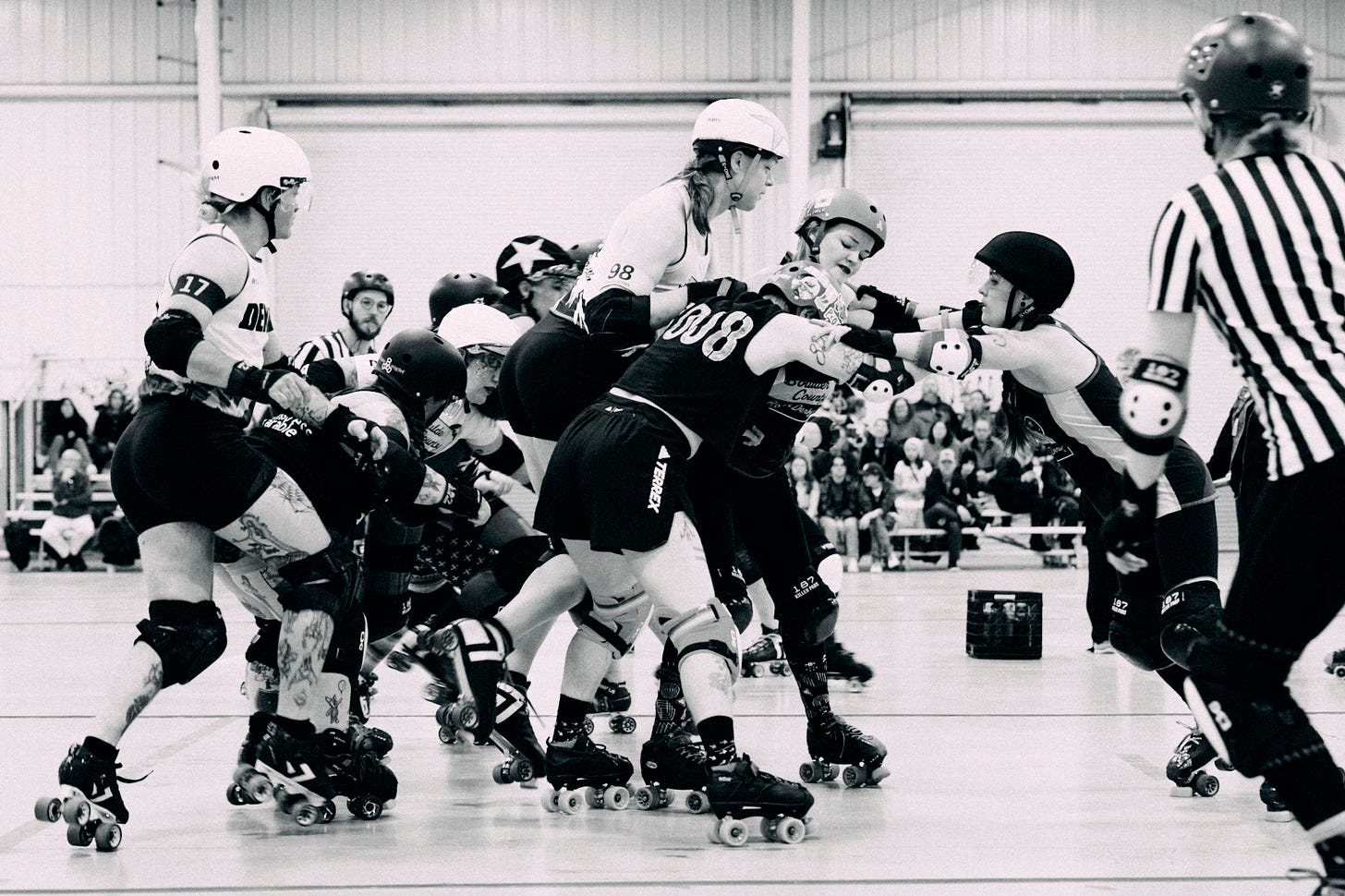
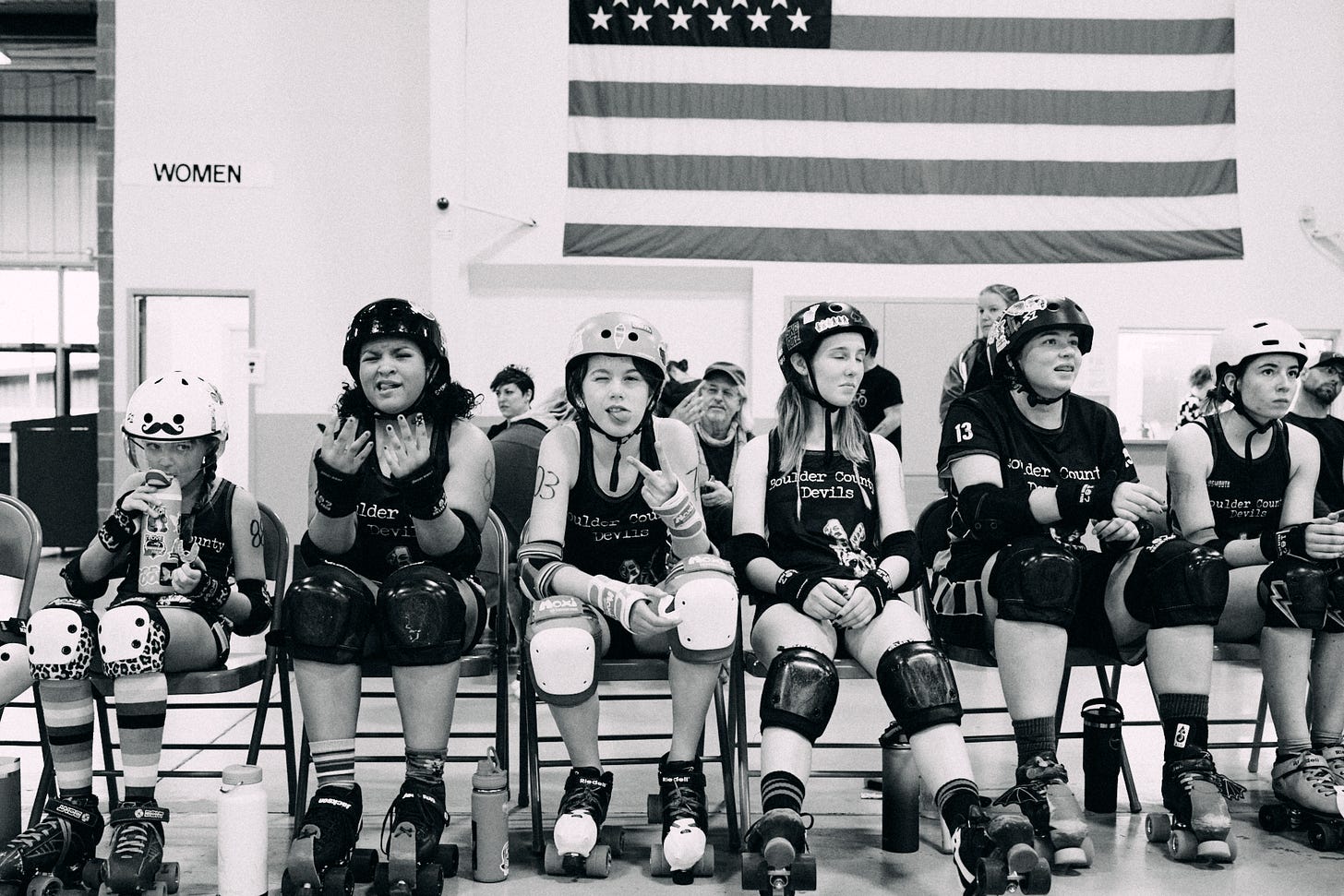
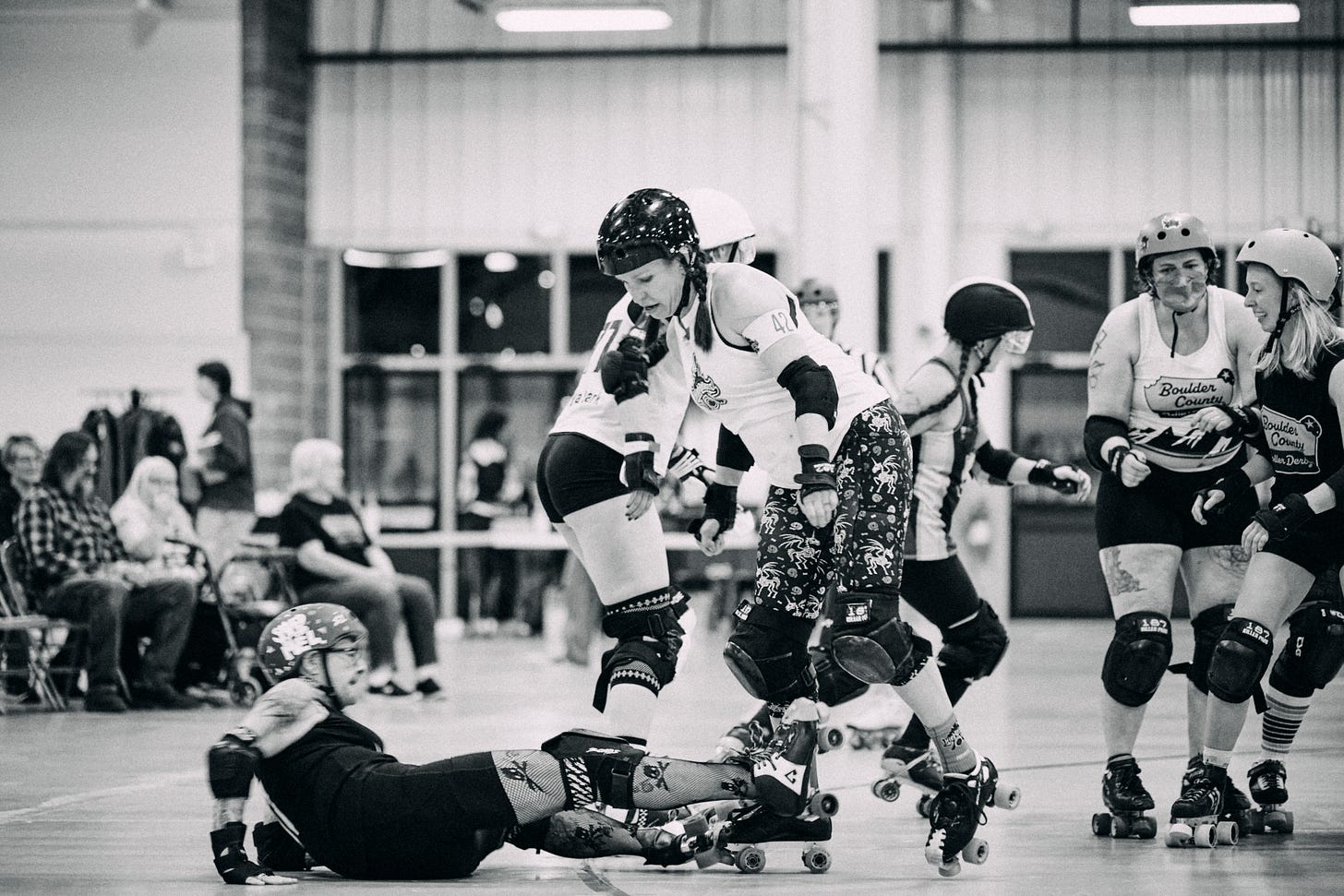


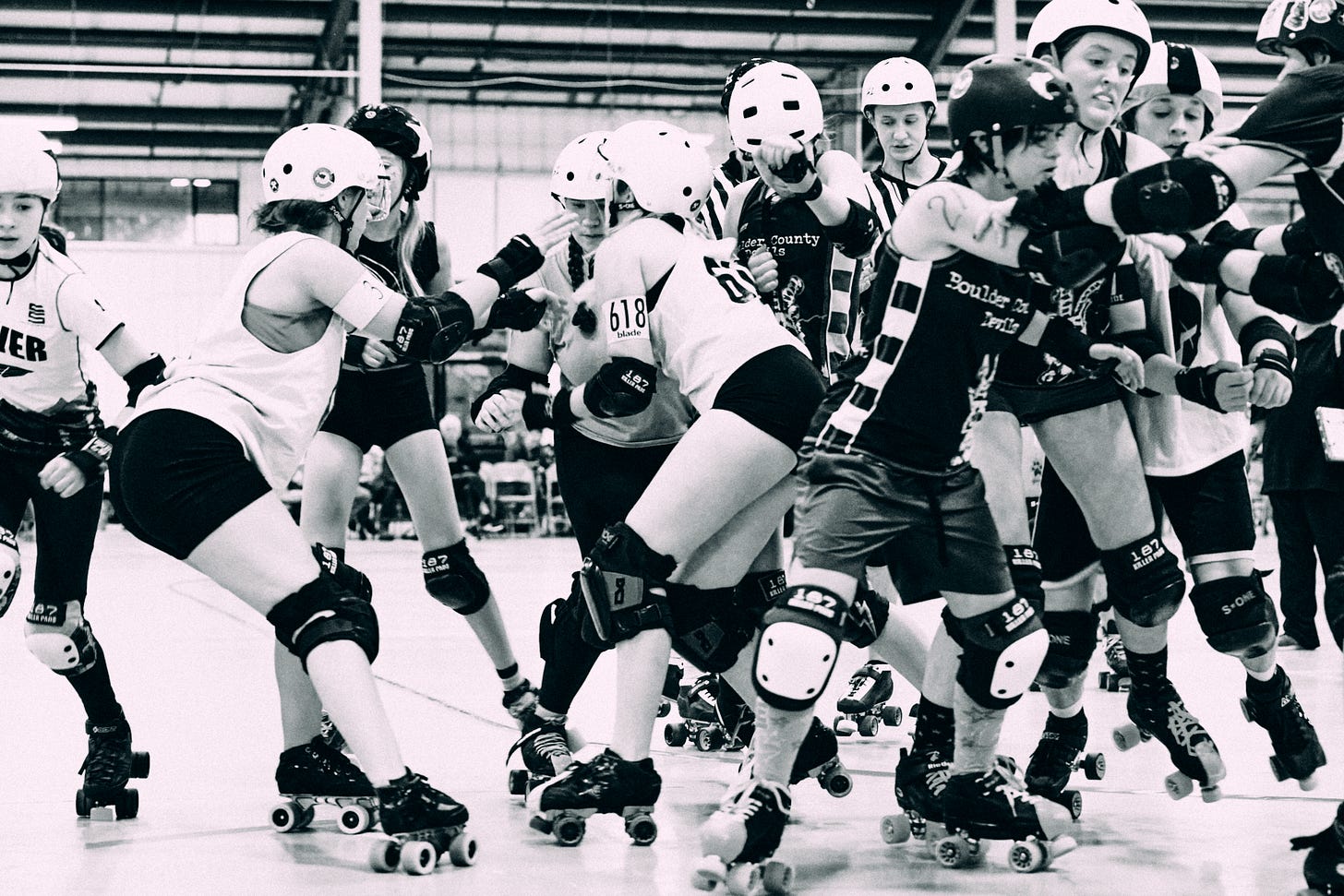
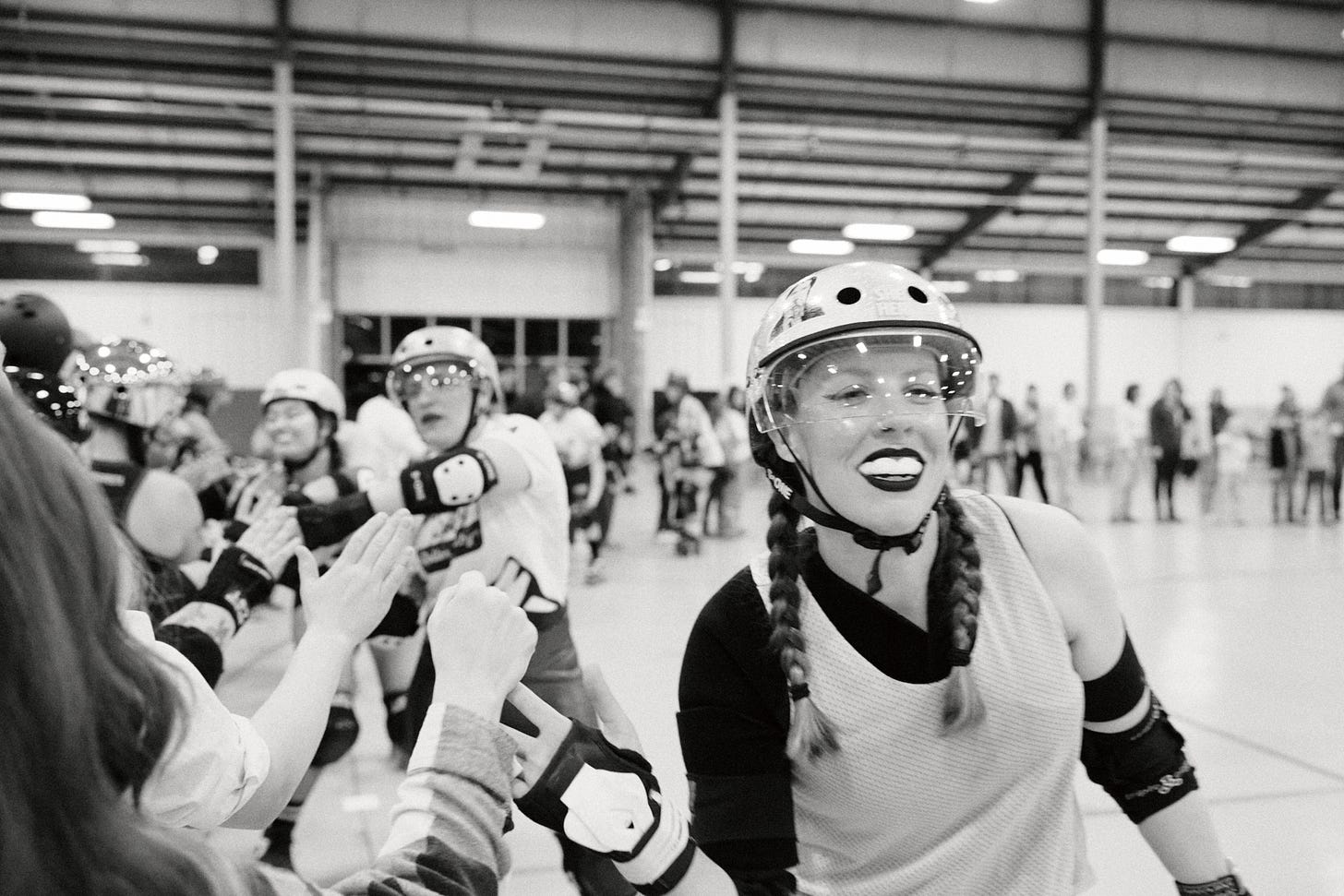
I loved the way you wrote this article. I find it easy to visualize a game and the individual personalities in the game.